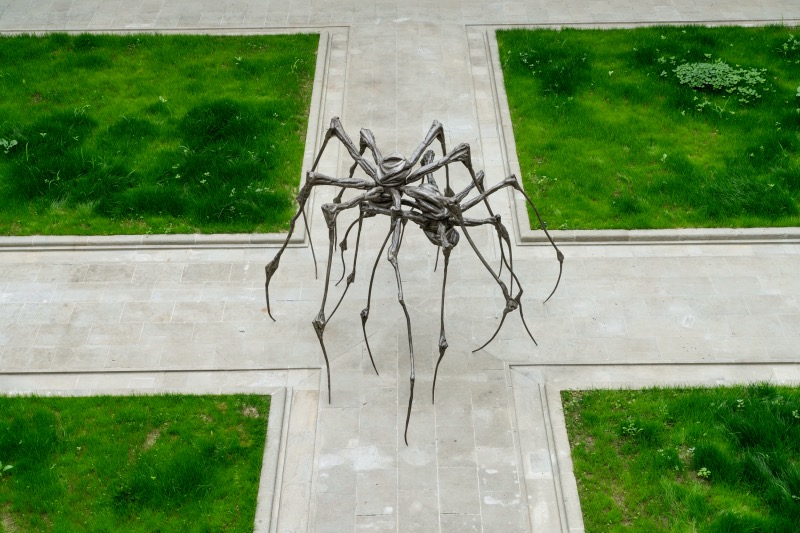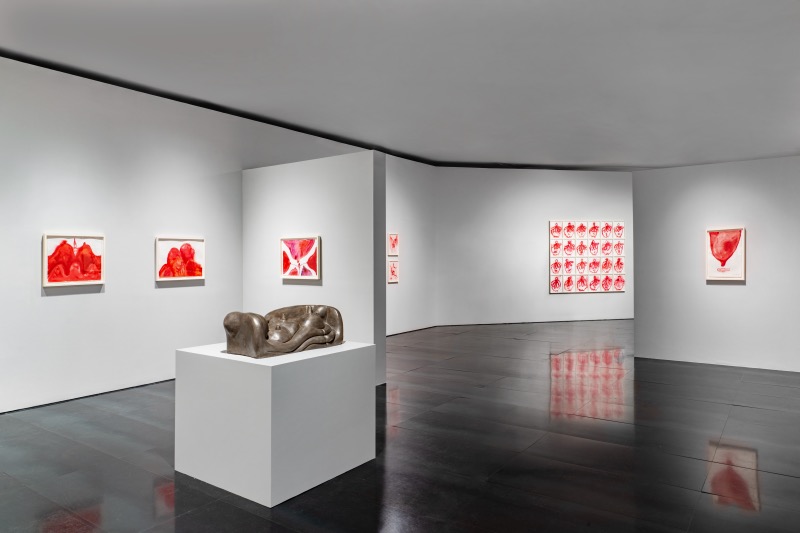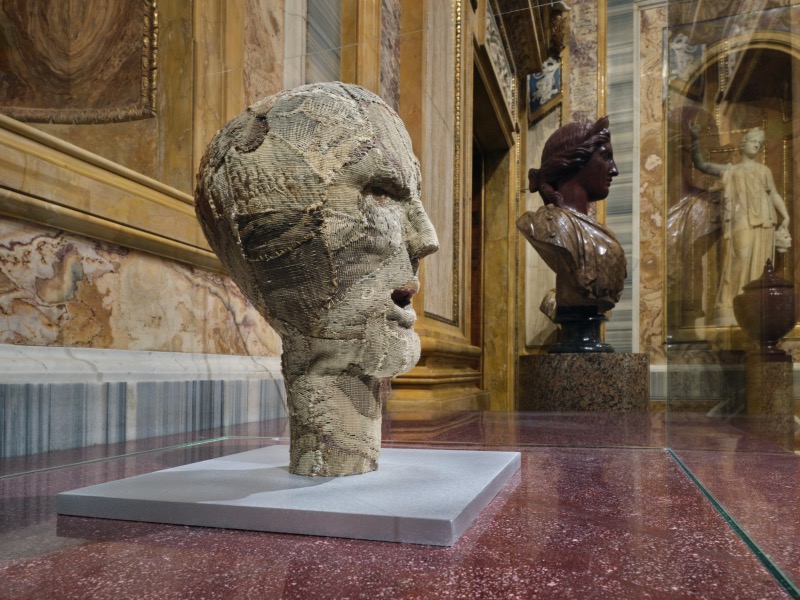
Have you ever thought about how deep the connection between personal experiences and art can be?
Personal life is often intertwined with creativity, in fact I believe it is this link that is fundamental, which allows great artists to describe what we really are, as was the case with the works of Louise Bourgeois.
Louise Bourgeois was an artist who grew up in the suburbs of Paris and her works offer an extraordinary example of how personal challenges can be transformed into powerful works of art. Through sculpture, drawing and installation, Bourgeois depicted her darkest traumas and emotions, exploring the human psyche with unique intensity and depth. In this post, I tell you all about this extraordinary artist, marked by complex family relationships, how her personal life profoundly influenced her artistic production, making her emerge as one of the most influential figures in 20th century art.
LIFE AND WORKS OF LOUISE BOURGEIOS

Le opere di Louise Bourgeois in mostra a Firenze presso il Museo del Novecento.
Louise Bourgeois spent her early years in a family that ran a tapestry restoration workshop on the outskirts of Paris. This environment rich in creativity, however, was also the scene of painful family dynamics that left a series of wounds in her psyche.
The complexity of his relationship with his parents and the traumatic experiences he suffered during his childhood became primary sources of inspiration for his art. In his works, Bourgeois used different materials such as wood, marble, bronze and fabric to visually express deep emotional states such as loneliness, jealousy, anger and fear.
A CHILDHOOD MARKED BY ART AND PAIN
Louise Bourgeois saw the creative process as a way of processing and releasing painful memories. Over the years, although she devoted herself to different art forms, it was sculpture that occupied a central role in her work, through which she explored autobiographical tensions and family traumas.
Often, these themes were transposed metaphorically, with a particular focus on the complicated relationship with his parents.
Through his art, Bourgeois was able to narrate abandonment and the desire for connection in ways that resonated universally, opening the door to a poetics of the uncanny.
THE SPIDER SYMBOL AND THE MOTHER
A recurring and significant element in Bourgeois’ work is the spider, a symbol that from the early 1990s onwards has taken on a particular significance, representing the mother figure. The spider can be seen as a dual entity: on the one hand it is a protective creature, building the house and providing sustenance for its young, and on the other it represents a disturbing presence, a symbol of aggression and threat.
Bourgeois herself identified with the spider, considering the sculpture a physical extension of her own being, almost as if she were weaving a web.
The theme of motherhood is also central to the life and work of Louise Bourgeois, who often explored the oscillation between mother and child, which becomes an oscillation between the good mother and the bad mother.
As a young girl, in a role reversal, Bourgeois cared for her chronically ill mother; as an elderly woman, the artist refused to be a mother because, she claimed, she herself needed a mother.
THE STYLE OF LOUSE BOURGEOIS
Bourgeois’ early works tend to be graphic, with clean lines and empty spaces.
In the 2000s, when she began working ‘wet on wet’ with gouache, he switched to a more painterly method, letting the colour soak into the paper and spread over it, which gives many of these drawings their embryonic quality. The various shades of red (for Bourgeois the colour of passion, blood and emotional intensity) give the impression of observing these processes of gestation, birth and nurture as if from within.
The womb is the perfect home where all needs are met, an ideal cell of security and rest. In a way, these images are perhaps the latest version of Bourgeois’ lifelong use of the symbol of the home, from the Femme Maison paintings and drawings of the 1940s, through the animal dens and nests of the 1960s, to the Cells of the 1990s.
On the one hand, the return to the womb expresses the desire to merge completely with the mother. On the other, this return, according to Freud’s formulation, constitutes the first home of every human being.

Un’opera di Louise Bourgeois in mostra a Roma presso la Galleria Borghese
THE ARTISTIC LEGACY OF LOUSE BOURGEIOS
Until the final days of her prolific career, Louise Bourgeois never stopped exploring and experimenting, maintaining a lively intellectual curiosity and unceasing creative energy. Her ability to express the unspeakable and transform the personal into the universal places her among the greatest artists of her time, leaving a legacy that continues to influence contemporary art.
Louise Bourgeois is not only a name in art history, she is a symbol of how art can serve as a means to understand and transform pain into beauty. Through her works, Louise Bourgeois invites us to reflect on the complexity of the human condition and the salvific power of artistic expression.

